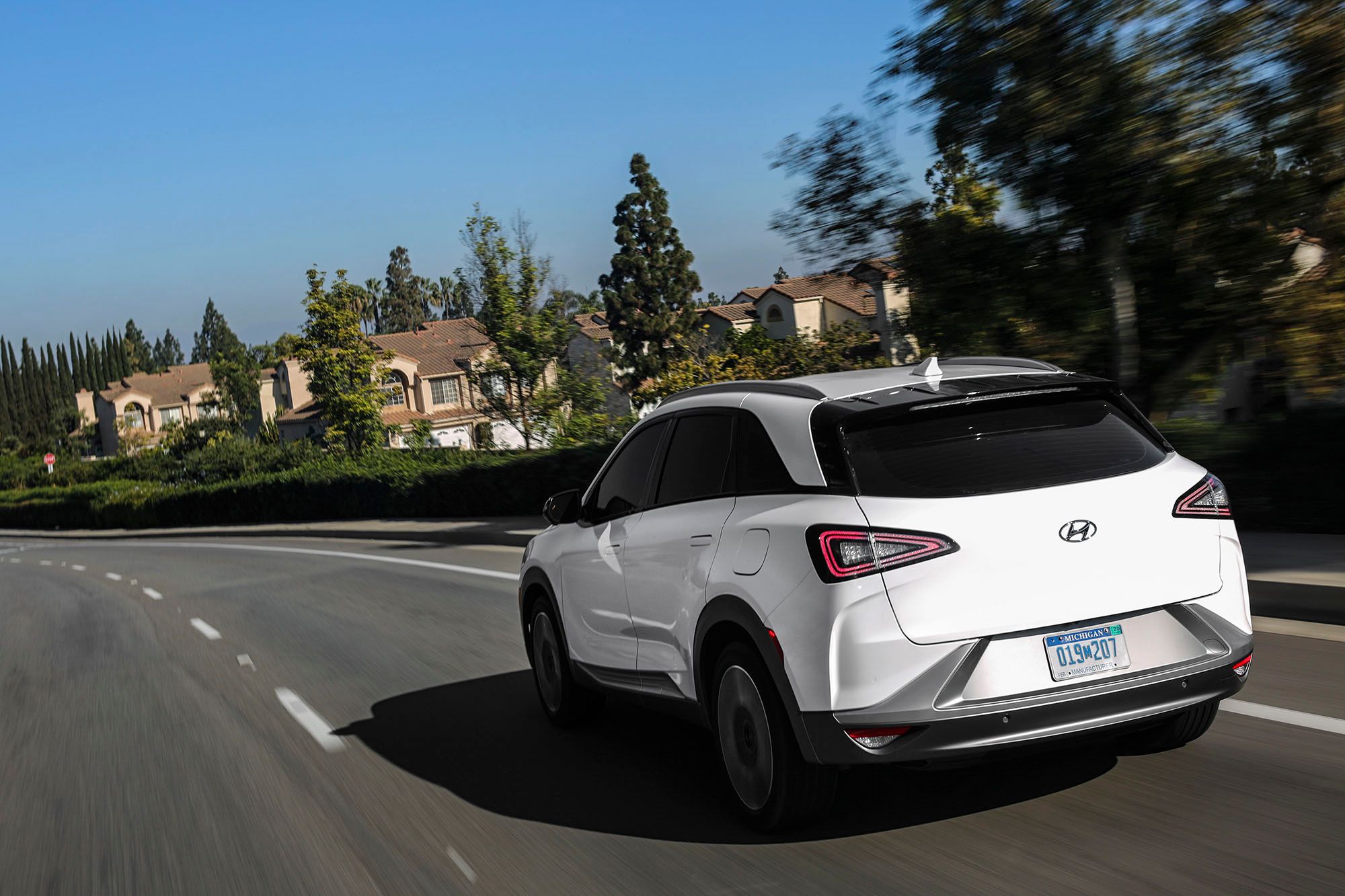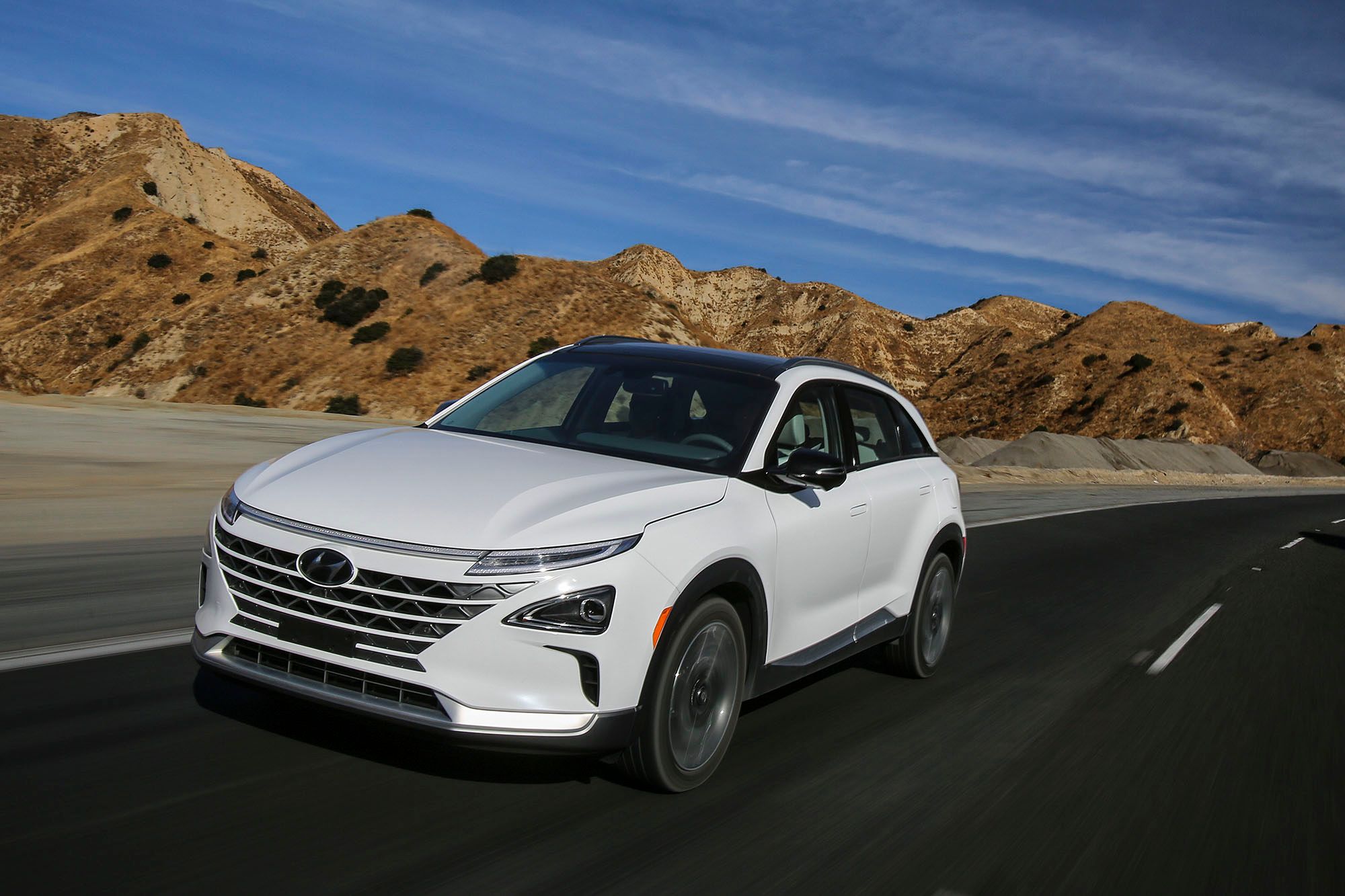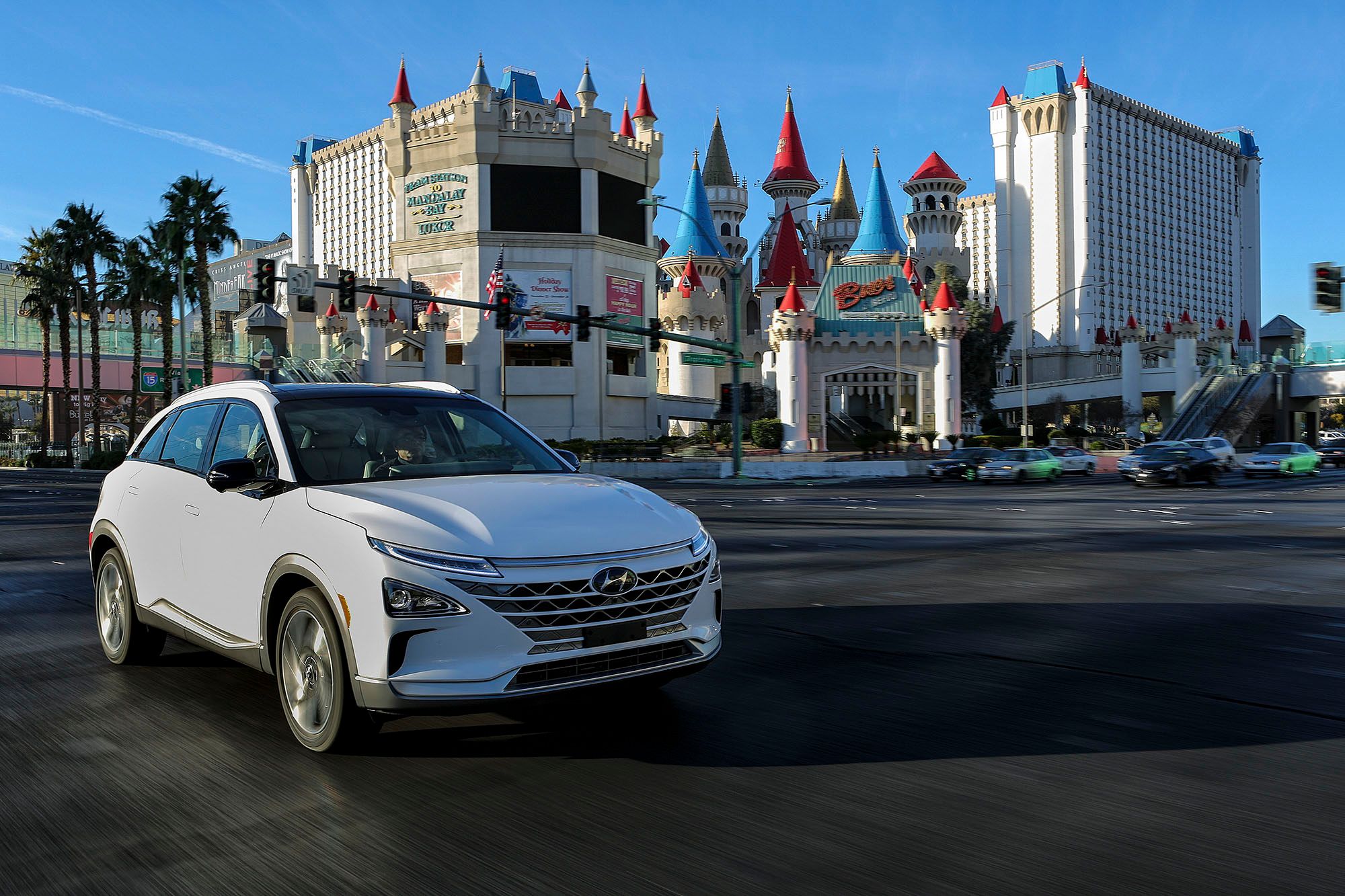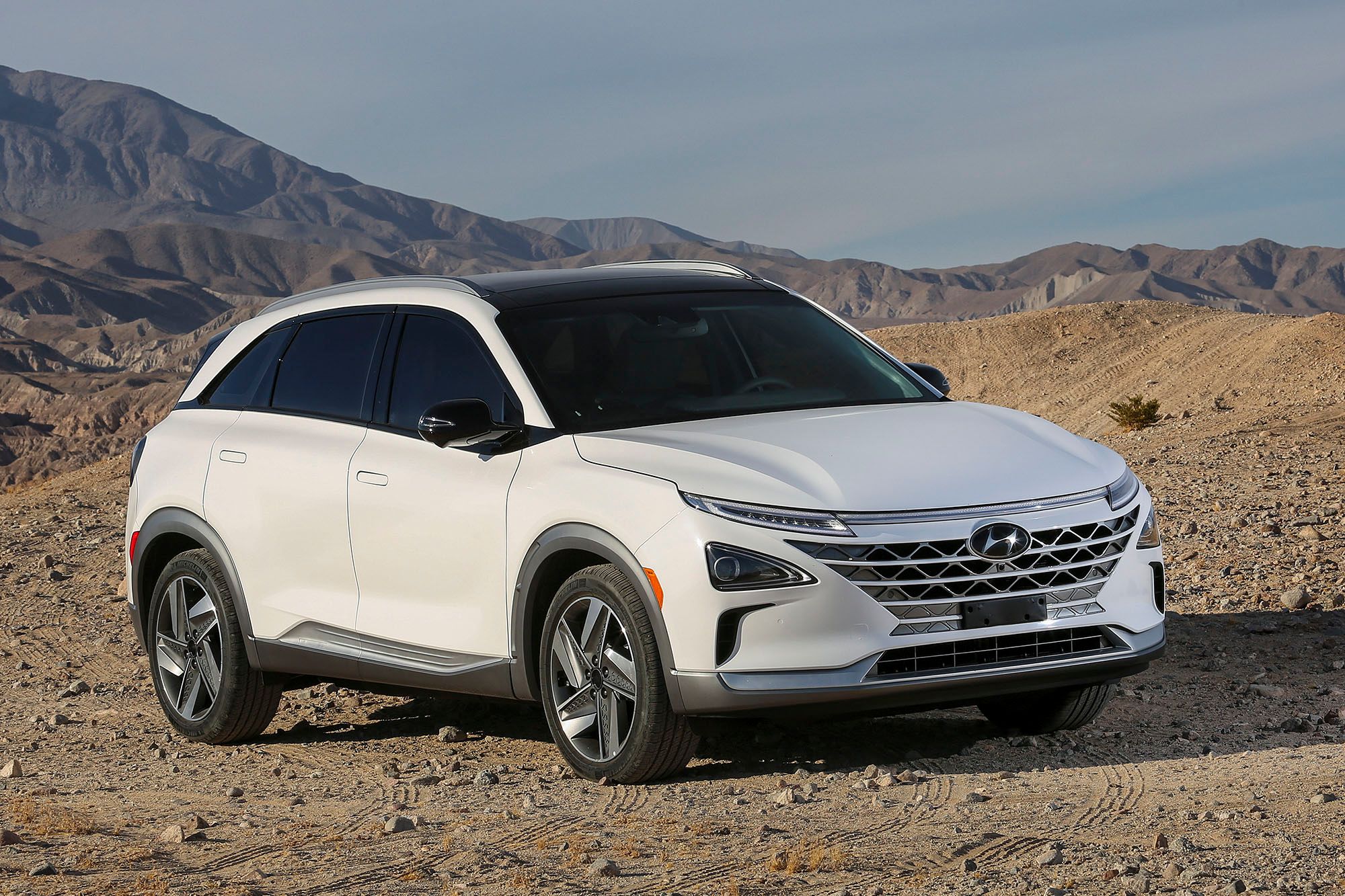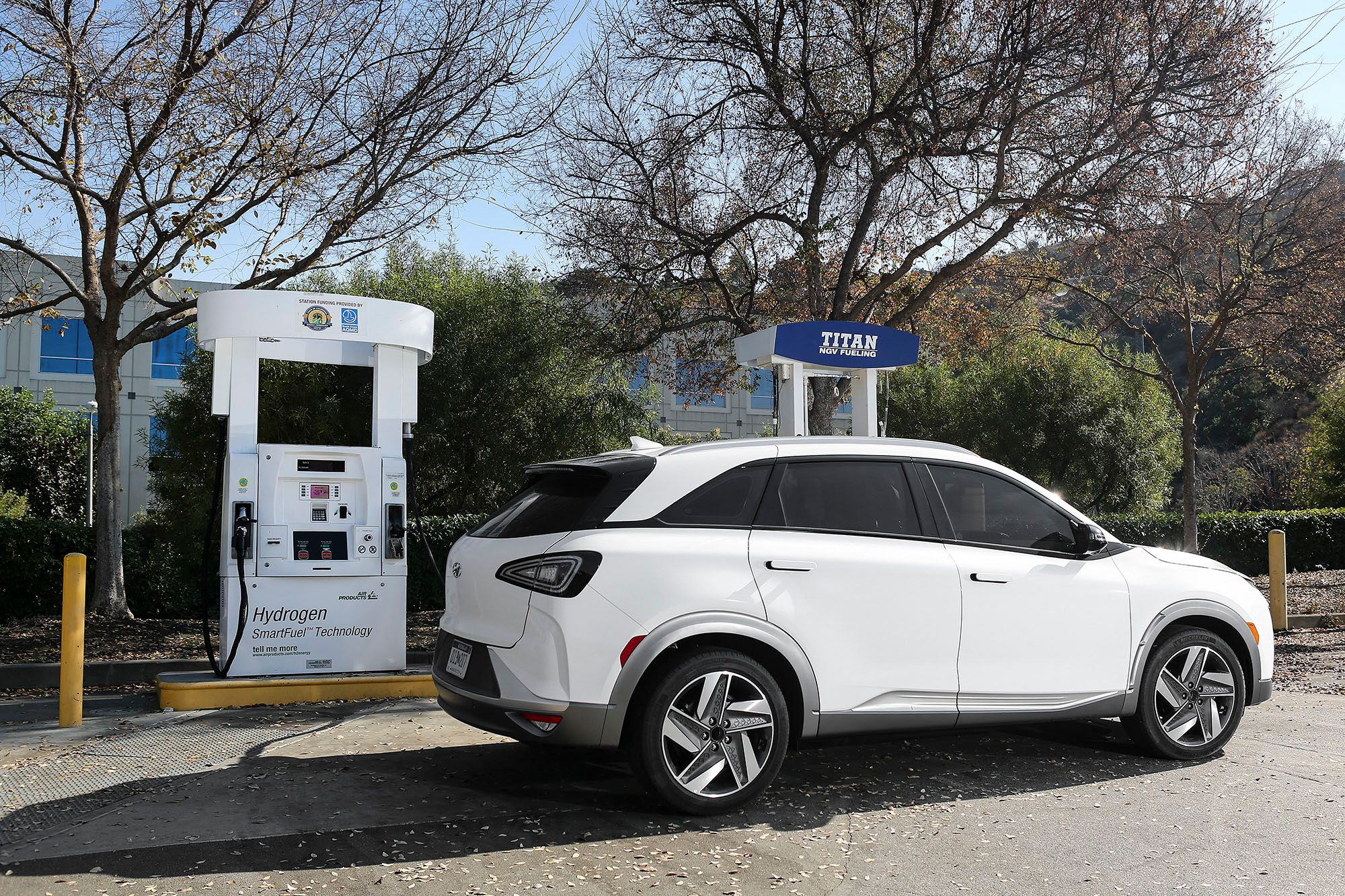Hyundai just announced its latest hydrogen-powered electric SUV at the 2018 Consumer Electronics Show in Las Vegas. Dubbed the Nexo, the next-gen FCEV improves on the old Tucson FCEV in just about every way possible, even tossing in some updated autonomous driving tech to boot.
Continue reading for the full story.
The Full Story
The Consumer Electronics Show is the traditional destination for automotive technology of all stripes. Now, Hyundai is getting in on the action with the debut of its latest powertrain and autonomous driving technologies, all packaged in a new SUV that Hyundai is calling the Nexo. Going forward, the tall-riding five-door will act as the brand's “technological flagship fuel cell vehicle.”
“Hydrogen energy is the key to building a more sustainable society,” said Dr. Woong-chul Yang, Vice Chairman at Hyundai. “Hyundai Motor Company has already taken a lead in hydrogen technology with the introduction of Tucson fuel cell. Yet as another result of this earth-saving effort, today, I am so proud to introduce to you our second-generation Fuel Cell Electric Vehicle which is a culmination of our cutting-edge technologies.”
Indeed, Hyundai has been pretty busy as of late refining its fuel cell tech, as evidenced by the list of improvements presented alongside the Nexo. Under the skin is Hyundai's fresh dedicated fuel cell electric vehicle architecture, which boasts a lower weight, more cabin space, and better accommodation for the fuel cell system layout compared to the older Tucson FCEV.
Power levels from the electric motors and overall performance have increased, with the entire powertrain boasting a lower weight and more compact packaging as well. The result is a 20 percent decrease to the 0-to-60 mph time as compared to the Tucson, down to 9.5 seconds versus 12.5 seconds in the older model. Peak output is now rated 120 kW and 291 pound-feet compared to the 100 kW and 221 pound-feet you get in the Tucson.
Hyundai says the Nexo is ready for the real world, proving its impressive cold-start capability after enduring -20 degrees Fahrenheit nights, as well as steep inclines in temperatures over 120 degrees Fahrenheit. Hyundai also says it improved its fuel cell tech's ability to handle high altitudes, while refueling times are down to five minutes to top off. A full tank will net you 370 miles before your next fill up, improving on the Tucson's range by more than 100 miles.
Sit inside the cabin, and you'll notice a reduction in ambient noises. And, as you might expect, the Nexo also includes Hyundai's latest Advanced Driver Assistance Systems for a bit extra autonomy, like self-parking, lane-keep assist, and blind-spot monitor. The features are upgrades over existing tech offerings, with the blind-spot monitor displaying a view of the blind-spots via cameras, which feed the gauge cluster behind the steering wheel. Meanwhile the Remote Smart Parking Assist can “autonomously park or retrieve itself from a parking space with or without a driver in the car.”
Finally, the Nexo is significantly larger than the Tucson.
The latest SUV is part of the brand's plan to usher in 18 new “eco-friendly” models by 2025. A production version is slated to hit select markets sometime early this year.
|
Engine And Powertrain Specs |
Hyundai Nexo |
Hyundai Tucson FCEV |
|
Fuel Cell |
95 kW |
100 kW |
|
Battery |
40 kW |
24 kW |
|
Torque |
291 pound-feet |
221 pound-feet |
|
0-to-60 mph |
9.5 seconds |
12.5 seconds |
|
Range |
370 miles |
265 miles |
|
Exterior Dimensions |
Hyundai Nexo |
Hyundai Tucson FCEV |
|
Length |
183.9 inches |
173.6 inches |
|
Width |
73.2 inches |
71.7 inches |
|
Height |
64.2 inches |
65.2 inches |
|
Wheelbase |
109.8 inches |
103.9 inches |
References
Read more CES news.
Read more Hyundai news.

